
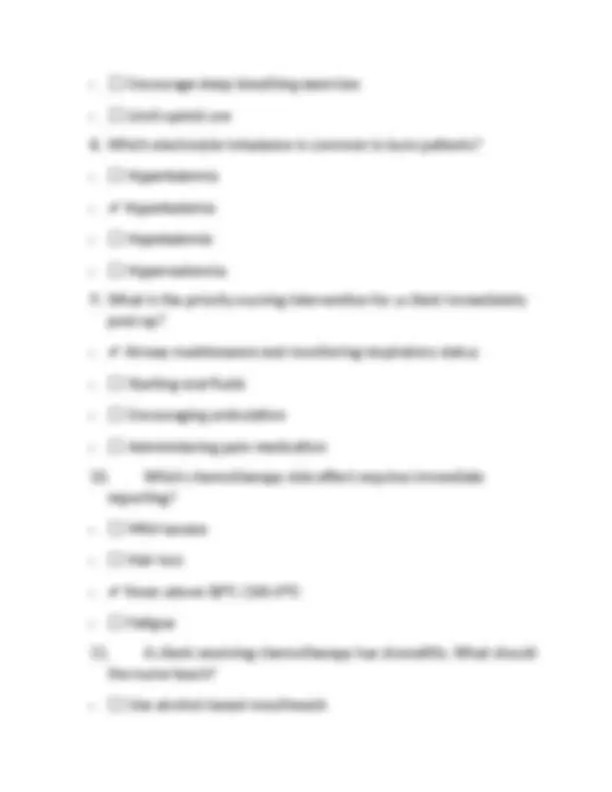
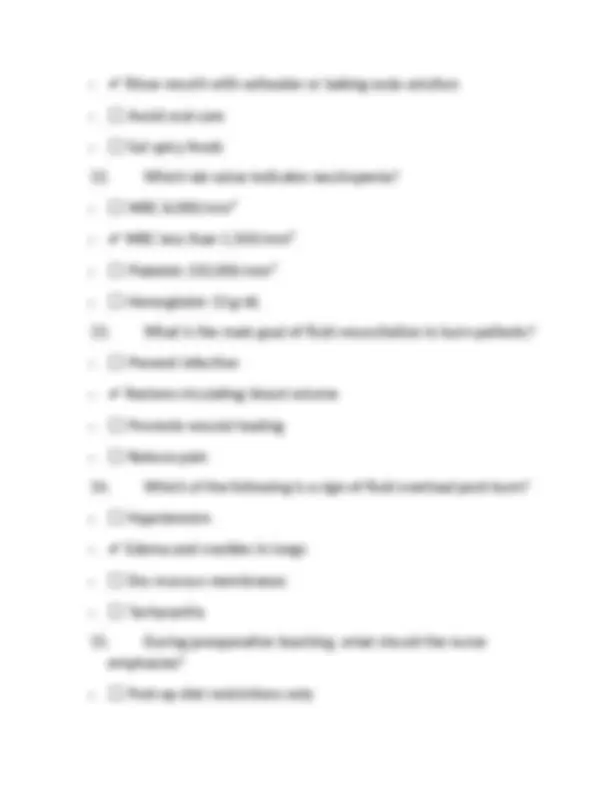
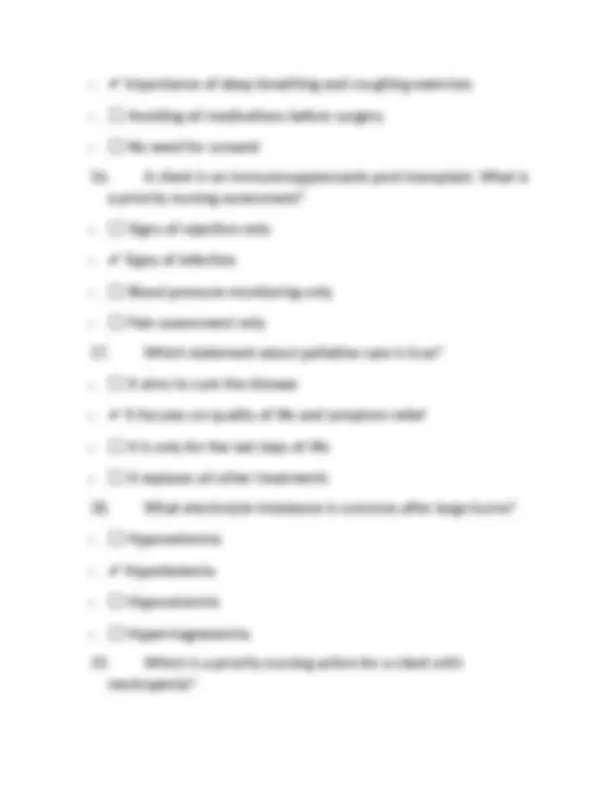
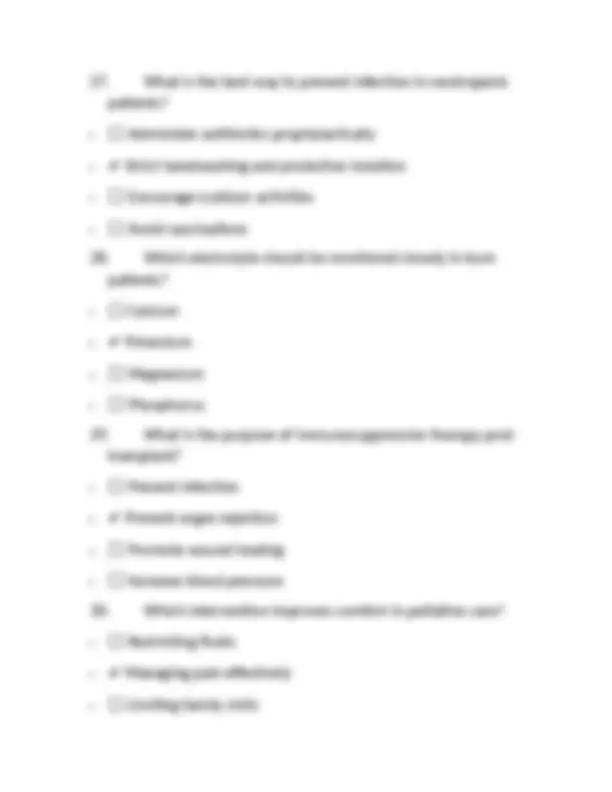
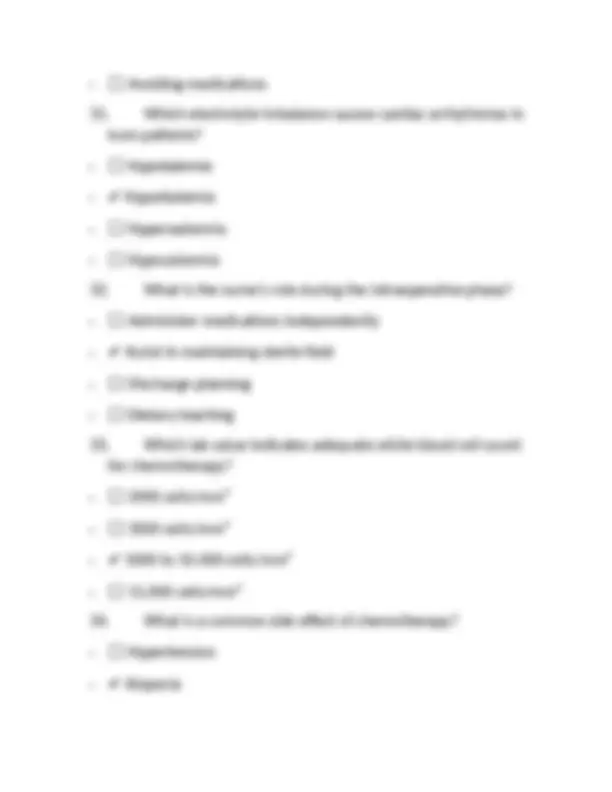
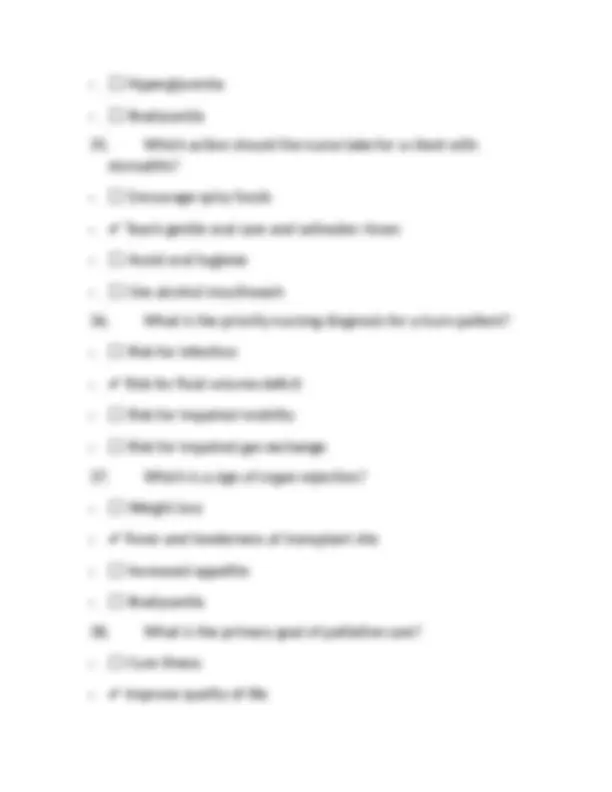
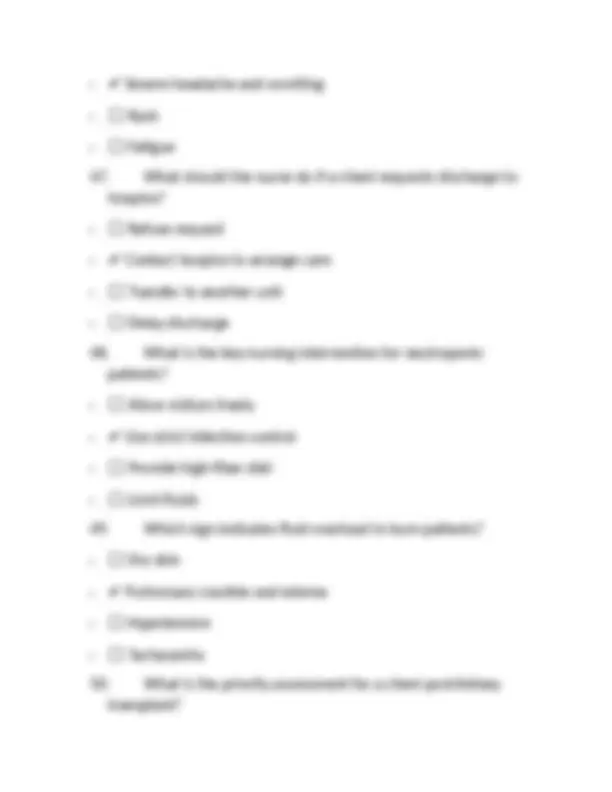



Study with the several resources on Docsity

Earn points by helping other students or get them with a premium plan


Prepare for your exams
Study with the several resources on Docsity

Earn points to download
Earn points by helping other students or get them with a premium plan
Community
Ask the community for help and clear up your study doubts
Discover the best universities in your country according to Docsity users
Free resources
Download our free guides on studying techniques, anxiety management strategies, and thesis advice from Docsity tutors
Comprehensive Nursing Management in Complex Clinical Conditions: Integrating Oncology, Critical Care, Surgical, Transplant, and Palliative Care
Typology: Exams
1 / 14

This page cannot be seen from the preview
Don't miss anything!









Comprehensive Nursing Management in Complex Clinical Conditions: Integrating Oncology, Critical Care, Surgical, Transplant, and Palliative Care
✔ Rinse mouth with saltwater or baking soda solution ⬜ Avoid oral care ⬜ Eat spicy foods
✔ Importance of deep breathing and coughing exercises ⬜ Avoiding all medications before surgery ⬜ No need for consent
⬜ Hair growth ✔ Nephrotoxicity ⬜ Hyperglycemia ⬜ Bradycardia
⬜ Hyperglycemia ⬜ Bradycardia
⬜ Prolong life at all costs ⬜ Prevent hospital admission
✔ Severe headache and vomiting ⬜ Rash ⬜ Fatigue
⬜ Pain level only ✔ Urine output and signs of rejection ⬜ Diet tolerance ⬜ Mobility status